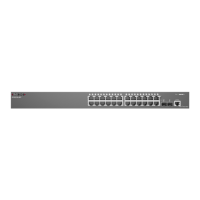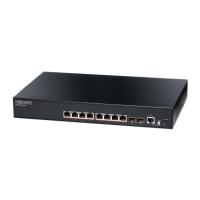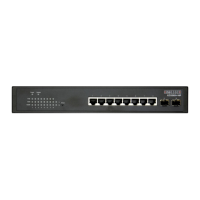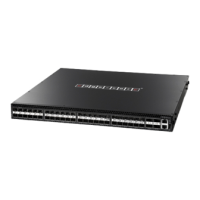Chapter 9
| General Security Measures
Port-based Traffic Segmentation
– 321 –
Default Setting
None
Command Mode
Global Configuration
Command Usage
◆
Use this command to create a new traffic-segmentation client session.
◆
Using the
no
form of this command will remove any assigned uplink or
downlink ports, restoring these interfaces to normal operating mode.
Example
Console(config)#traffic-segmentation session 1
Console(config)#
traffic-segmentation
uplink/downlink
This command configures the uplink and down-link ports for a segmented group of
ports. Use the
no
form to remove a port from the segmented group.
Syntax
[
no
]
traffic-segmentation
[
session
session-id] {
uplink
interface-list
[
downlink
interface-list] |
downlink
interface-list}
session-id – Traffic segmentation session. (Range: 1-4)
uplink
– Specifies an uplink interface.
downlink
– Specifies a downlink interface.
interface
ethernet
unit/port
unit - Unit identifier. (Range: 1)
port - Port number. (Range: 1-10/28)
port-channel
channel-id (Range: 1-8)
Default Setting
Session 1 if not defined
No segmented port groups are defined.
Command Mode
Global Configuration
Command Usage
◆
A port cannot be configured in both an uplink and downlink list.
◆
A port can only be assigned to one traffic-segmentation session.

